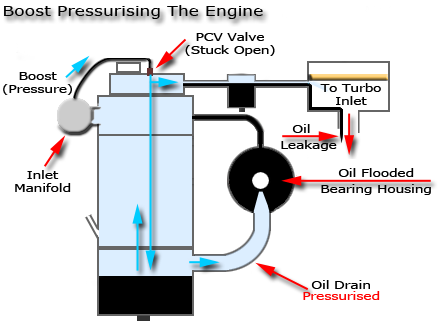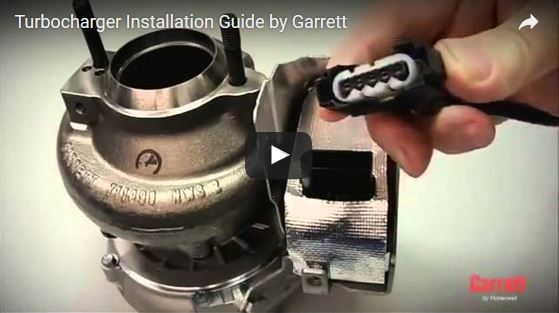
I just fitted the turbo & it's still blowing smoke!
Probably the most frequent question I've been asked over many years and more often than not by mechanics because in fairness they may rarely repair a turbocharged vehicle...
Unfortunately in most cases where mechanics aren’t familiar with turbocharged vehicles, analytics is limited to, "the turbo is leaking oil so it must be the turbo!” The dilemma is although the turbo was indeed leaking oil it is usually due to some other factor causing it to leak or inflict damage to it. Don't resolve the actual primary source of the problem and you will be back to where you started, oil leakage from the turbo and/or blue smoke after you have replaced it coupled with total frustration as to what to do next. I'm sure most mechanic's initial response is, "I'm going to exterminate the dude who rebuilt this turbo!”
I've spent many hours, months, years on the phone going through a check list of tests due to the turbocharger being the most misunderstood, victimised and cursed component on any vehicle when in fact it is one of the most reliable. Most of the tests listed below won't be found in any workshop manual as turbo fault diagnosis is not taught at trade school, it’s learnt from experience, theorised during many a sleepless night, and tested over the years. In most cases, one of the tests below will find the cause of your smoke quandary unless it falls under the category, “other possibilities”.
======
What's a Piston Ring Seal Anyway?
Briefly, most turbochargers use piston ring seals1 & when installed there is a specified minimum / maximum measureable installed gap2 as per the turbo manufacturer's specifications to allow for expansion caused by heat. In addition to the seals the machining design on the rear of the turbine wheel shaft3 & front collars are intended to throw any oil in the vicinity of the seals back towards the centre of the bearing housing as it spins, loosely termed as an "oil slinger".
If there is fault causing oil to be forced or build-up against these piston ring seals they will indeed leak as technically their not oil seals, their primary purpose is to prevent boost on the inlet side & exhaust gases on the turbine side from entering into the bearing housing, the reversal of what is commonly presumed.
Technically a turbocharger fitted on a good engine with correct oil pressure, adequate oil drain and well designed breather systems etcetera, could operate with no seals installed at all and would not leak.
Pressurised oil enters the bearing housing and stabilises the turbine shaft. After the oil passes through the bearings it falls into a cavity at the bottom of the bearing housing making it's way back to the sump via an oil drain system, the flow rate back to the sump is governed solely by gravity.
A common statement I hear from many customers; "My turbo must have faulty seals" is not in fact a realistic possibility.

Turbocharger Lubrication System:
The following image displays the manner in which oil flows to the turbocharger from the engine oil supply under pressure then returns to the sump with gravity, it is then scavenged up by the oil pump and the cycle keeps repeating itself whilst the engine is running. (Engines vary from the below image but the principle is the same for most!)

Checklist:
- Allow time for any oil residue in the inlet or exhaust to burn away.
- Remove the oil filler cap & check for fumes.
- Check the oil level.
- Check the air filter, intake pipes, clamps.
- Check the breather hoses, (filter and canister if fitted).
- Spark plug test.
- Check the oil quality, type, was it changed?
- Check the oil drain for any restrictions.
- Sump pressure test via removal of oil drain.
- Sump pressure test under boost conditions.
- Compression and leak-down test.
- Check oil flow &/or pressure at idle and high rpm.
- Other possibilities.
- The turbocharger.
Details:







